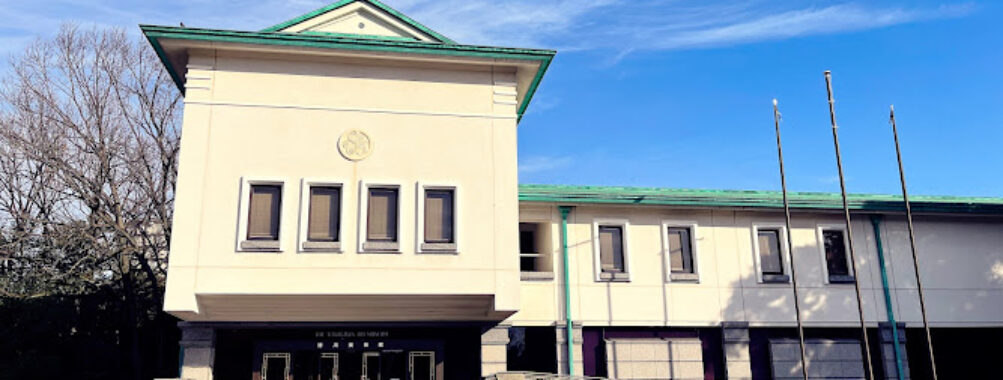
Tokugawa Art Museum
Table of Contents
Description
The Tokugawa Art Museum stands as one of Japan’s most significant cultural repositories, housing an unparalleled collection that spans nearly 400 years of Japanese artistic excellence. What makes this museum truly special is that many of these masterpieces once belonged to the Owari Tokugawa family, one of the three major branches of the powerful Tokugawa clan. You’ll find yourself walking through living history – these aren’t just museum pieces, but actual possessions of one of Japan’s most influential families.
The collection features some pretty incredible stuff, including samurai armor that actually saw battle, elegant tea ceremony utensils that hosted emperors, and some of the most beautiful paintings I’ve ever laid eyes on. But the crown jewel? That would be the original 13th-century illustrated handscrolls of The Tale of Genji – yeah, THE Tale of Genji, considered the world’s first novel. Mind-blowing, right?
Key Features
• The Hōsa Library – housing over 110,000 books and documents from the Owari Tokugawa family
• National Treasure Collection – featuring priceless items including medieval weapons, armor, and paintings
• The Tale of Genji Scrolls – original 13th-century illustrated handscrolls
• Traditional Japanese Garden – featuring a serene pond and seasonal flora
• Rotating Seasonal Exhibitions – showcasing different aspects of the collection throughout the year
• Tea Ceremony Room – displaying historic tea ceremony implements
• Special Exhibition Gallery – hosting temporary exhibitions of rarely-seen artifacts
• Interactive Cultural Displays – offering hands-on experiences with traditional Japanese arts
Best Time to Visit
I’d say early morning (right when they open) is your best bet for avoiding crowds and getting the most peaceful experience. The museum tends to get busier around midday, especially during weekend afternoons. Spring and fall are particularly magical times to visit – the garden puts on quite a show with cherry blossoms in April and fiery maple leaves in November.
If you’re into special exhibitions, check the museum’s schedule before planning your visit. They regularly rotate portions of their massive collection, meaning you might catch something extra special. Winter months typically see fewer visitors, making it easier to spend quality time with each exhibit.
How to Get There
Getting to the Tokugawa Art Museum is actually pretty straightforward. From Nagoya Station, hop on the Meijo Subway Line and ride it to Ozone Station. From there, it’s about a 10-minute walk – just follow the signs, you can’t miss it. If you’re driving, the museum has both free and paid parking lots available, though I’d recommend taking public transport during peak season when parking can get a bit tight.
Tips for Visiting
Listen, I learned some of these the hard way, so let me save you some trouble. First off, photography isn’t allowed inside the museum – trust me, they’re serious about this one. You’ll want to set aside at least 2-3 hours to properly appreciate everything. The exhibitions have English descriptions, but grabbing an audio guide really enhances the experience.
Wear comfortable shoes because you’ll be doing quite a bit of walking, and remember to bring a light jacket – they keep the temperature cool to preserve the artifacts. The museum restaurant serves some pretty decent traditional Japanese meals, but if you’re on a budget, there are several good spots nearby.
Oh, and here’s a pro tip: the museum shop has some really unique souvenirs you won’t find anywhere else in Japan. I picked up a gorgeous replica of a Tokugawa-era tea bowl that’s now one of my favorite pieces at home.
The museum closes promptly at the posted time, so make sure to start your visit with enough time to see everything. And if you’re interested in the garden, try to check the weather forecast – it’s most enjoyable on a clear day, and the morning light makes for the best viewing conditions.
Remember to keep your voice down – Japanese museums tend to be quieter than what you might be used to. And while the museum is wheelchair accessible with rentals available, some parts of the traditional garden might be a bit challenging to navigate.
During cherry blossom season or autumn foliage, try to visit on a weekday – the weekend crowds can get pretty intense. And if you’re super interested in The Tale of Genji scrolls, know that they only display the originals during special exhibitions to preserve them. But don’t worry – they have some amazing high-quality reproductions on permanent display.
Location
Places to Stay Near Tokugawa Art Museum
Find and Book a Tour
Explore More Travel Guides
No reviews found! Be the first to review!